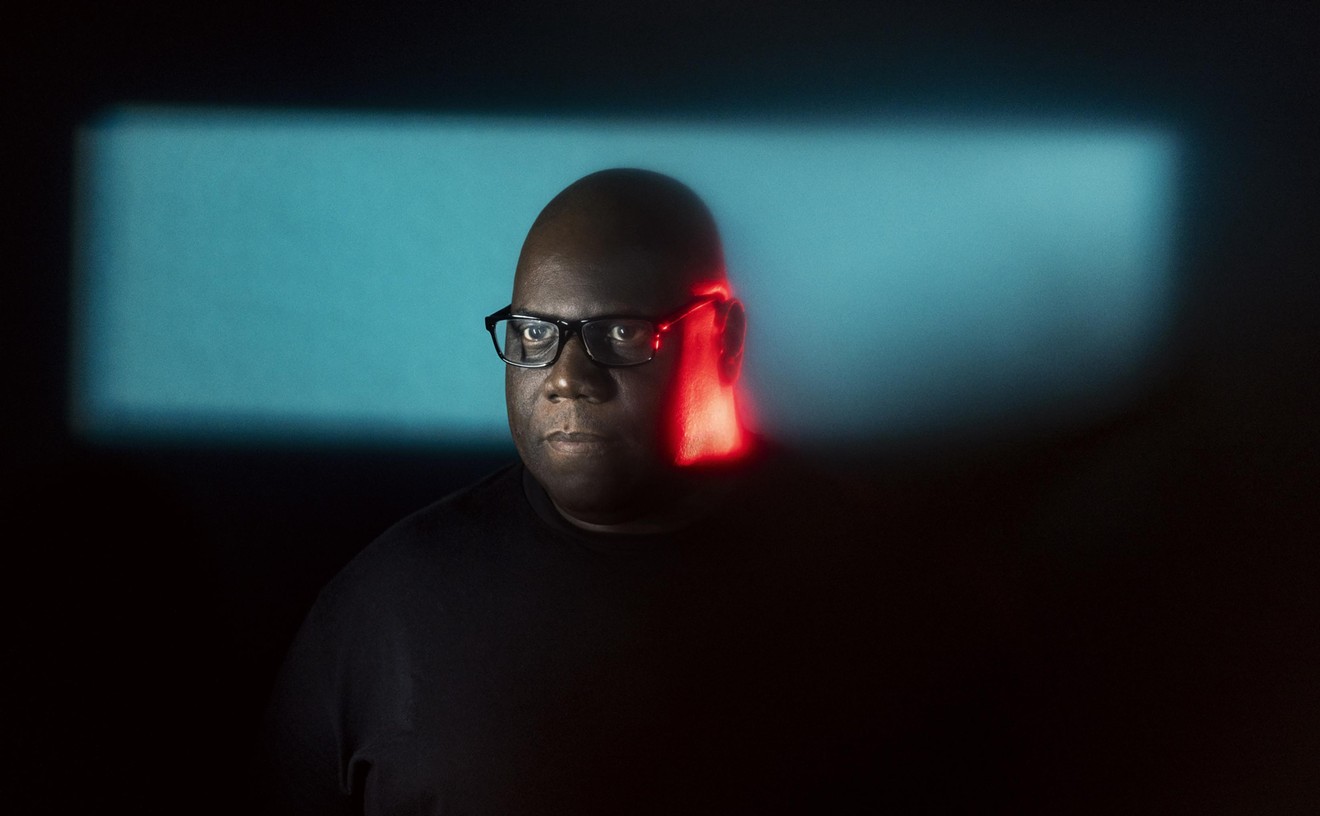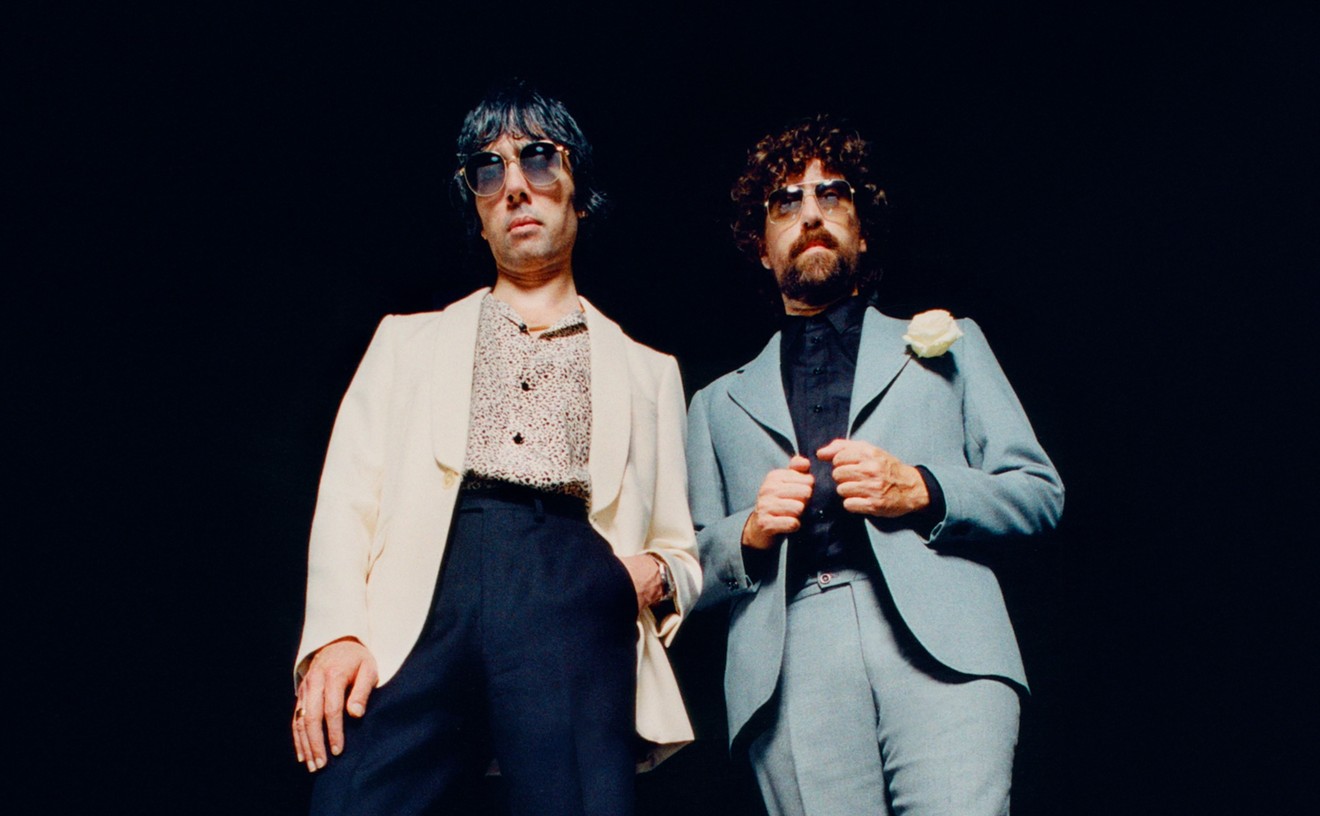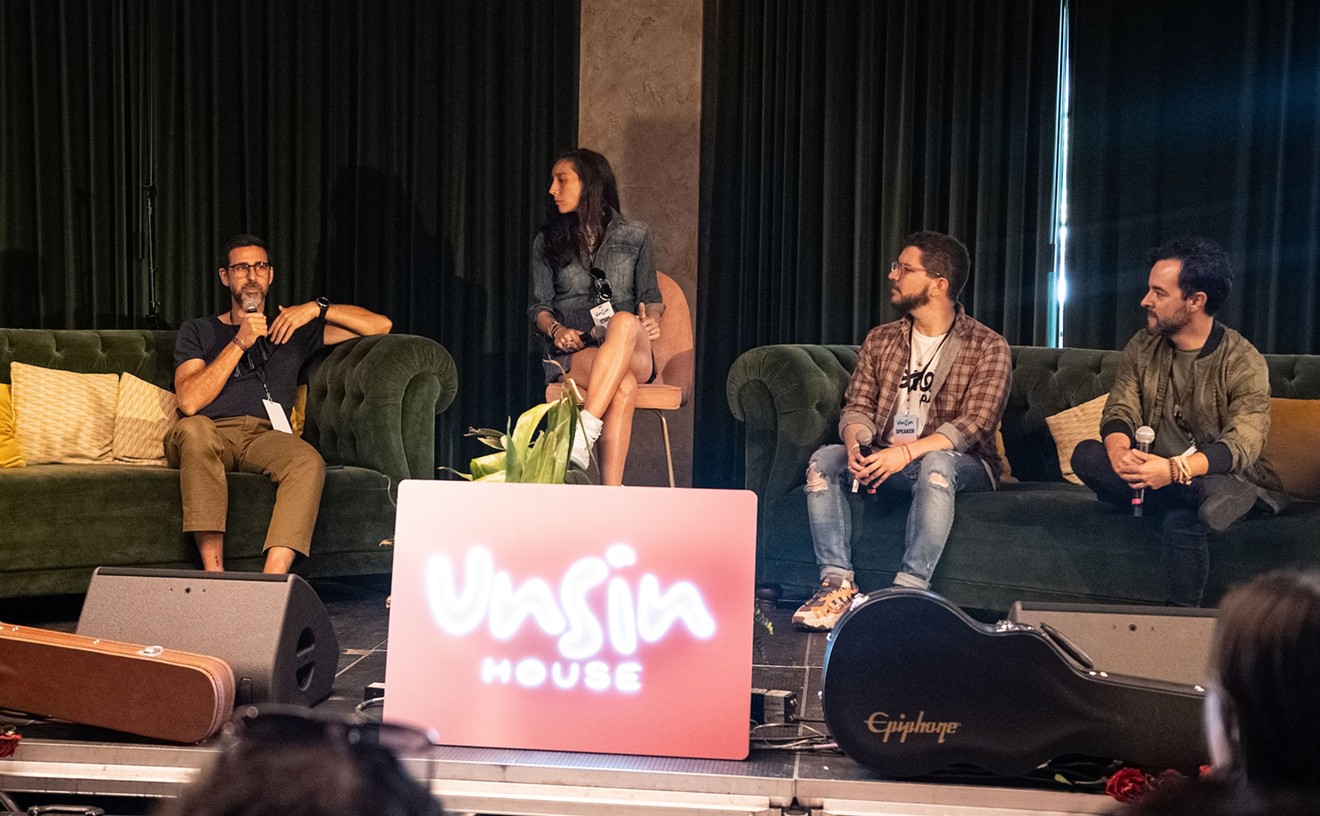Faceless strawmen and shimmering goddesses flex their knees and fix their hair in the foyer between the front lobby and the auditorium of Havana's Amadeo Roldan Theater. The dancers and musicians of the Afro-Cuban folkloric troupe Yoruba Andabó prepare to storm a performance of the twentieth-century classical piece, Carmina Burana.
As the National Symphonic Orchestra and the National Chorus of Cuba bring the final movement of "Fortuna" to a crescendo, a stack of two-headed batá drums crash to the foyer floor. Ushers, smartly dressed in miniskirts and vests, rush from their posts to shush the pandemonium. Running in circles, the head usher blocks the path of the folkloric percussionists who are trying to scoop up their instruments and rush down the aisles on cue.
Drumming and dancing, the folklorists lead a train of concertgoers, pied piper style, out of the auditorium, through the foyer, past the front doors, and across the street to Villalón Park. Photographers and videographers from the national and international media race ahead of the procession, trying to snap Yoruba Andabó as they round the path that circles the park's perimeter. Beside a dried up fountain in the center of the park, hundreds of families mill about, waiting for Cuba's most prominent rumba groups to perform: Yoruba Andabó, Clave y Guaguancó, Los Papines, and Los Muñequitos de Matanzas.
Cubadiscos 2000, this year's edition of the recording industry conference hosted annually by the Cuban Institute of Music, is dedicated to the Afro-Cuban social dance, the rumba. According to Cubadiscos' director Ciro Benemelis, the folklorists' invasion of the symphony represents the Cuban government's official position that national popular culture is on par with classical European traditions. Once a symbol of the most marginal members of Cuban society, the socialist regime has taken the rumba as a symbol of the racial and economic equality promoted by the revolution.
"There was a time," says Benemelis, "when rumba was the dance of the blacks and the poor. But now blacks and whites dance together." However harmonious the official line, the mad dash of the rumberos out of the concert hall suggests that, for better or worse, rumba is still on the streets. And the rumberos themselves occupy an uncertain place in today's rapidly changing, tourist-driven society.
At one of a series of colloquia dedicated to the genre in the mornings during Cubadiscos, Giovani del Pino, the slight, chestnut-toned director of Yoruba Andabó, protested the persistent marginality of the rumba. "There is no rumba scheduled at Pabexpo, Cubadiscos' main conference hall," del Pino complained. "We have been told there would be no audio amplifying the performance in the park. How will people hear us? And the Rumbazo, what they are calling 'The Longest Rumba in History' is taking place at La Tropical."
The Salon Rosado, adjacent to what was once La Tropical brewery, was frequented exclusively by wealthy whites before the 1959 revolution. Around midnight on the evening of the Rumbazo, the dance floor is three-quarters full with Afro-Cubans doing their best, as they say, to "resolve" their everyday problems and get out on the town on a Saturday night. At the far end of the dance floor above a towering staircase, a long distance from the stage, sit scattered tables of tourists and other VIPs who enter the club through a separate entrance and pay admission in dollars, not pesos.
During the Rumbazo renowned rumberos from across the nation will perform from 8 :00 p.m. until 8:00 a.m. Weary percussionists and dancers wait their turns sitting at tables scattered across a patio raised along the left side of the stage. At a table littered with empty bottles of soda and rum, veteran rumberos Carlos Abreu and Gerardo Portillo School recount in the moonlight the musical history they have heard with their own ears.
Nearly a century ago, when Abreu was a young boy in the southern Havana neighborhood known as Santa Amalia, fierce competitions in the composition of the rumba raged. Contenders from rival barrios would invent lyrics on the spot, showing off their metrical mastery by always keeping within the 3/2 percussive pattern known as the key, the clave. "Back then there was always a chalkboard to keep score," recalls Abreu, known in the years since as El Elogio or Praise for his musical prowess. Frequently as he speaks, he breaks into song. "Whenever there was an error in the phrasing, it was noted on the board."
"The rumba was very developed back then," recalls Portillo School, Abreu's junior at a spry 76 years old. "The songs held a deep wisdom that didn't come from books."
Beginning in the mid-Nineteenth Century, black freedmen living in the urban centers of Havana and Matanzas gathered in shared patios called solares to make music from the drums of Africa and from the sorrows of the struggle to survive. The rumba gave spiritual, not material, sustenance. By the Twenties, talented musicians played rumba for their own entertainment but sought work in nightclubs and at parties playing more commercial genres, like bolero and son.
A native of Matanzas, Portillo School came to Havana in 1956 to make his fortune. He played gigs at places such as the Tropical but earned his keep as a shoemaker. "The revolution made it possible for me to make my living as a musician," he observes. But that security came with a price. "There came a moment when I didn't play son anymore," Portillo School recalls. "You couldn't play cymbals, because all foreign influences were forbidden. I began to sing to Che, which was something I never did before, because everything else was forbidden. I began to sing ballads. That was around 1975 or 1976." He pauses, then adds, "Tonight I will sing rumba for the first time in many, many years."
Abreu and Portillo School will sing as special guests of Los Muñequitos de Matanzas, the most commercially successful of the contemporary rumba outfits. Even as Portillo School felt pressure to perform political ballads, Los Muñequitos promoted the rumba, eventually winning support from the state for their expression of national culture. As the island economy grew increasingly dependent on tourism and the commercial appeal of Cuban acts abroad, national culture yielded hard currency.
"The rumba used to be just for fun," explains Abreu. "But now things have changed."
"Groups like Los Muñequitos and Yoruba Andabó travel constantly," adds Portillo School. "The rumba itself has changed. In terms of rhythm, it's much more aggressive now. The original rumba was less spectacular." According to Helio Orovio, musicologist and author of the Dictionary of Cuban Music, the aesthetic of the rumba has changed more in the last decade than in all of the preceding 140 years. "I used to be able to play rumba," he laughs, "but not anymore, not the way kids play today."
One of the pioneers in the rumba's new percussive pyrotechnics, 30-year-old Freddy Hernandez of Yoruba Andabó, sits a few tables away from his elders, debating whether to go home and catch some sleep or stick it out until his scheduled performance at 5:00 a.m. A professional folklore musician, Freddy scrapes by with regular gigs at tourist hotels, private percussion classes for foreigners, the occasional festival or tour, and a growing number of recording jobs.
While a handful of folkloric groups have enjoyed recording success, the rapid internationalization of the Cuban-music industry has left musicians in all strata vulnerable to unscrupulous entrepreneurs. Freddy feels the squeeze in his pockets: "People come and they say, 'Hey, we'll give you $20 to record a song.' They think we're all fools here." Although the new industry presents musicians with opportunities and pitfalls unknown to old-timers like Abreu and Portillo School, more often than not young rumberos earn their chops much as their elders did: by listening. Perhaps more significant than any other indication of the rumba's continued street status, many of the folklore musicians do not receive the rigorous, official training offered through the state music schools but learn outside the system in traditional settings.
With the waxing and waning of musical fortune, the test of a true rumbero remains the same: "I couldn't show you pieces of paper that say I'm a trained musician," concedes Freddy. "Me, I show what I know when I put my hands on the skins."










